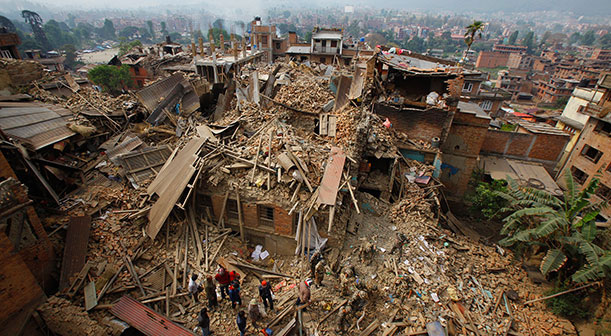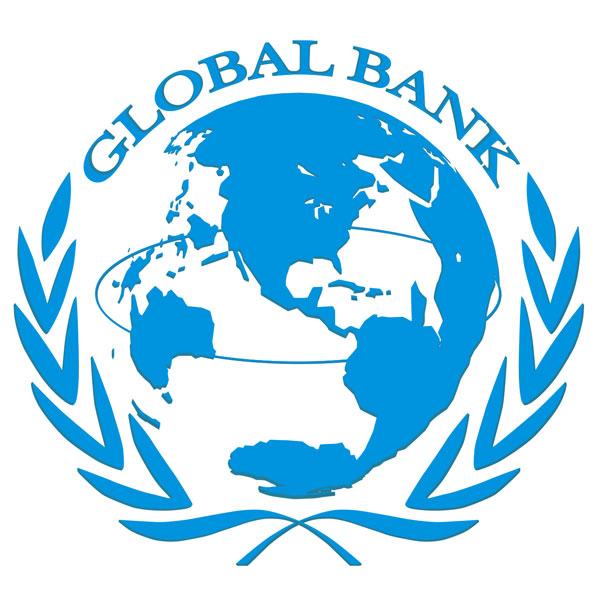Disaster and Climate Risk Assessment
 POST-DISASTER NEEDS ASSESSMENT
POST-DISASTER NEEDS ASSESSMENT
A Post-Disaster Needs Assessment and Recovery Framework (PDNA/RF) is a government-led exercise that estimates post-disaster damage and losses across all sectors of the economy as well as the recovery, relief, reconstruction, and risk management needs. The Post-Disaster Needs Assessment also provides guidance to the government and international donor community on the country’s short, medium, and long-term recovery priorities. The Global Bank Disaster Risk Reduction and Reconstruction Fund – An Umbrella Trust Fund (the “Trust Fund,” “GB DRRRF,” or “DRRRF”) is helping countries assess the impact of disasters and supporting recovery planning including in fragile and conflict situations. The DRRRF has developed substantial knowledge and expertise in needs assessment and recovery planning.
Major disaster events are typically followed by multiple assessments, carried out by a large number of agencies and covering a broad range of sectors. These assessments are wide-ranging-- from the rapid assessment of immediate needs to the most elaborate assessment of long-term recovery and risk reduction requirements. The post-disaster setting is a complex and demanding environment, where the most urgent task is to promptly assess humanitarian needs and provide life-saving relief assistance to those affected. It further requires an assessment of the damages and losses caused by the disaster and the development of a comprehensive recovery plan that would lead back to a sustainable development process where risk reduction in the face of disasters is explicitly considered. To meet such challenges, a country affected by a disaster often requires the support of a wide range of national and international actors. In the past, this process was characterized by a multiplicity of parallel needs assessments and planning exercises conducted by respective individual groups, agencies, and donors. Typically, such assessments varied in scope and rigor and would be undertaken at different stages during the phases of response, and recovery. The Post-Disaster Needs Assessment is a mechanism for joint assessment and recovery planning following a disaster. Through this mechanism, the parties involved seek to assess the impact of a disaster and define a strategy for recovery, including the estimation of financial resources required. It pulls together information on the socio-economic aspects of damages, effects (economic losses, the disaster caused changes in service delivery, governance, and risk), impacts and needs, as well as highlights recovery priorities from a human recovery perspective. The cumulative result is a consolidated report that lends to a resilient recovery strategy. The aim of the Post-Disaster Needs Assessment is to assist governments to understand the full extent of a disaster’s effect and impact, and the needs of the affected population. By informing the Recovery Roadmap and the Recovery Action Plans, and by defining a strategy for mobilising the financial and technical assistance required, the Post-Disaster Needs Assessment ensures that the response is appropriate to the needs and that the overall response is adapted to the evolving circumstances. Enabling resilient recovery It is expected that the Global Bank Disaster Risk Reduction and Reconstruction Fund – An Umbrella Trust Fund will be engaged in every major disaster, helping countries assess the impact of disasters and supporting recovery planning including in fragile and conflict situations. GFDRR has developed substantial knowledge and expertise in needs assessment and recovery planning. Over the next three years, DRRRF aims to strengthen its standby response capacity to help coordinate and support post-disaster assistance. Rapid Response  The Post-Disaster Needs Assessments conducted under the leadership of affected country governments are the most important tasks of the Global Bank Atlantic Recovery Trust Fund - Standby Recovery Financing Facility (SRFF). The flagship products of the Global Bank Disaster Risk Reduction and Reconstruction Fund – An Umbrella Trust Fund are the reports that these assessments generate. These are reports of the respective governments prepared with the assistance of the DRRRF and the international community at large. They are increasingly being used by governments and the international development community to base the recovery and reconstruction plans and programs upon. They are also as the base document for discussions to determine international development assistance in cases requiring external assistance including leveraging of targeted or additional assistance from the Global Bank and other traditional donors.
The Post-Disaster Needs Assessments conducted under the leadership of affected country governments are the most important tasks of the Global Bank Atlantic Recovery Trust Fund - Standby Recovery Financing Facility (SRFF). The flagship products of the Global Bank Disaster Risk Reduction and Reconstruction Fund – An Umbrella Trust Fund are the reports that these assessments generate. These are reports of the respective governments prepared with the assistance of the DRRRF and the international community at large. They are increasingly being used by governments and the international development community to base the recovery and reconstruction plans and programs upon. They are also as the base document for discussions to determine international development assistance in cases requiring external assistance including leveraging of targeted or additional assistance from the Global Bank and other traditional donors.
The DRRRF Coordination Unit will be headed by a programme manager in the Climate Change Global Practices within the Network Complex and the Bank’s Regional Complex Department at the Global Bank. Through its DRRRF Coordination Unit, the Global Bank Disaster Risk Reduction and Reconstruction Fund – An Umbrella Trust Fund mobilizes and coordinates the international emergency response and identification of acute disaster risks caused by conflicts or by natural disasters, mobilising their Post-Disaster Needs Assessment and Recovery Framework. In an emergency situation, the DRRRF will send out a request for an expert who can be mobilised immediately to respond on the ground.
To learn more about the Global Bank Disaster Risk Reduction and Reconstruction Fund, What we do and How we do it and Management and Organization, visit the About DRRRF and the Frequently Asked Questions Section of the DRRRF Website Section.
For more information about the Global Bank, what we do and how we do it, please go to the About Us section of the Global Bank Website. http://www.global-bank.org

